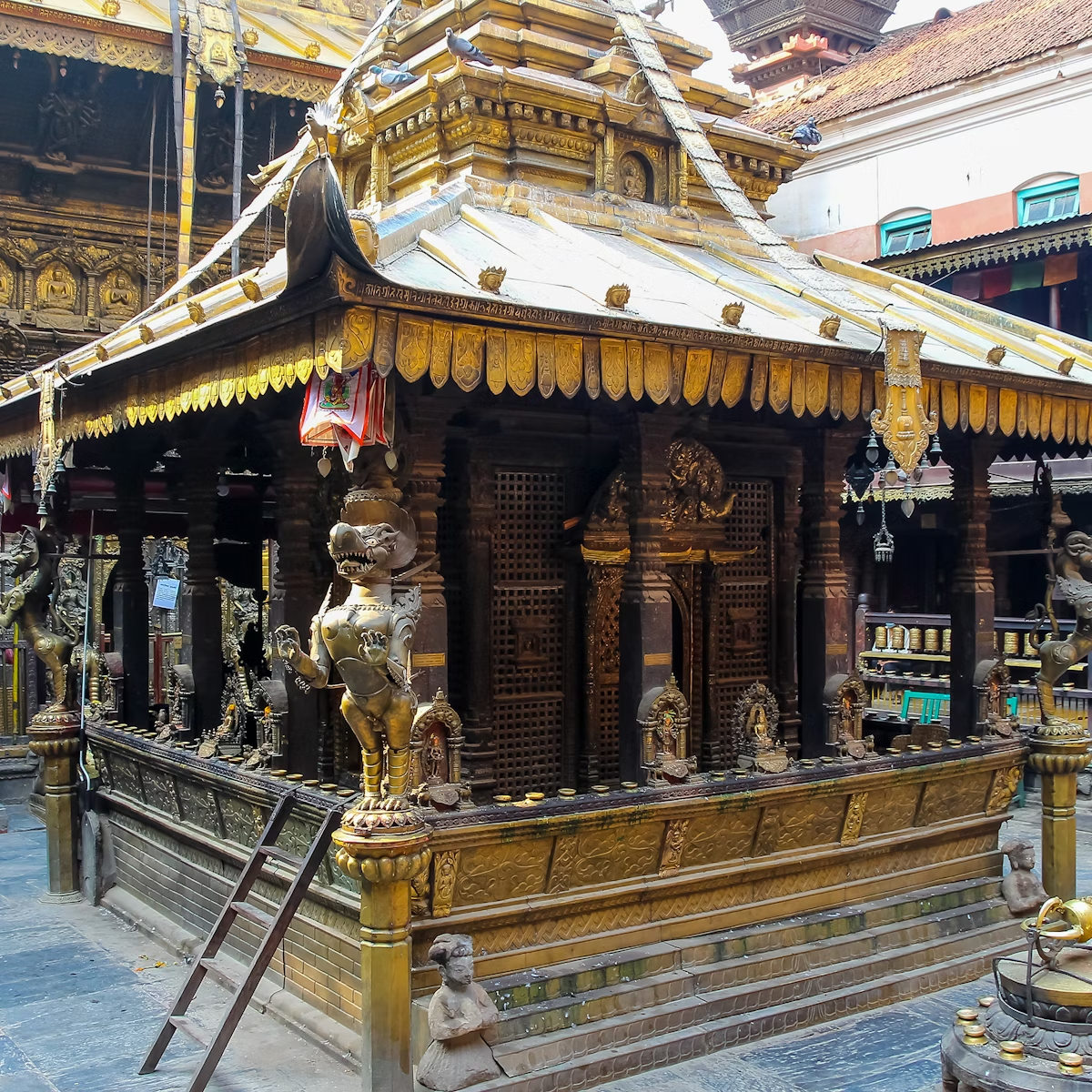This temple is said to be the oldest Hindu temple still in use in the Kathmandu Valley. Built in the two-tiered pagoda style, the main shrine here is guarded on all sides by pairs of real and mythical beasts – elephants, lions, winged lions and ram-horned griffons – and its roof struts feature some amazingly intricate carvings of Tantric deities. Changu Narayan and its associated buildings were badly affected by the 2015 earthquake however; restoration of the complex is under way.
The statue inside shows Vishnu as Narayan, the creator of all life, but the beautifully decorated metal-plate doors are only opened for rituals and only Hindus may enter.
The Garuda figure facing the west door is said to date from the 5th century, and in front of this statue is the oldest stone inscription in the valley, dating from AD 464, which recalls how the king persuaded his mother not to commit sati (ritual suicide) after his father’s death. Two large pillars carry a conch and chakra disc, the traditional symbols of Vishnu.
Dotted around the courtyard are a series of extraordinary carvings dating from the Licchavi era, showing Vishnu in his various avatars (incarnations). Vishnu appears in the southwest corner of the compound as Narsingha (his man-lion incarnation), disembowelling a demon with his fingers, and as Vikrantha (Vamana), the six-armed dwarf who transformed himself into a giant capable of crossing the universe in three steps to defeat King Bali (look for his outstretched leg).
To the side of these images is a broken slab showing a 10-headed and 10-armed Vishnu, with Ananta reclining on a serpent below. The plaque is divided into three sections – the underworld, the world of man and the heavens. In the northwest corner of the compound is an exquisite 7th-century image of Vishnu astride Garuda, which is illustrated on the Rs 10 banknote.
The squat temple in the southeast corner of the complex is dedicated to the Tantric goddess Chhinnamasta, who beheaded herself to feed the bloodthirsty deities Dakini and Varnini.
Down the steps leading east from the temple complex are the one-storey Bhimsen Pati, with its stone guardians, and the remains of a Malla-era royal palace.








